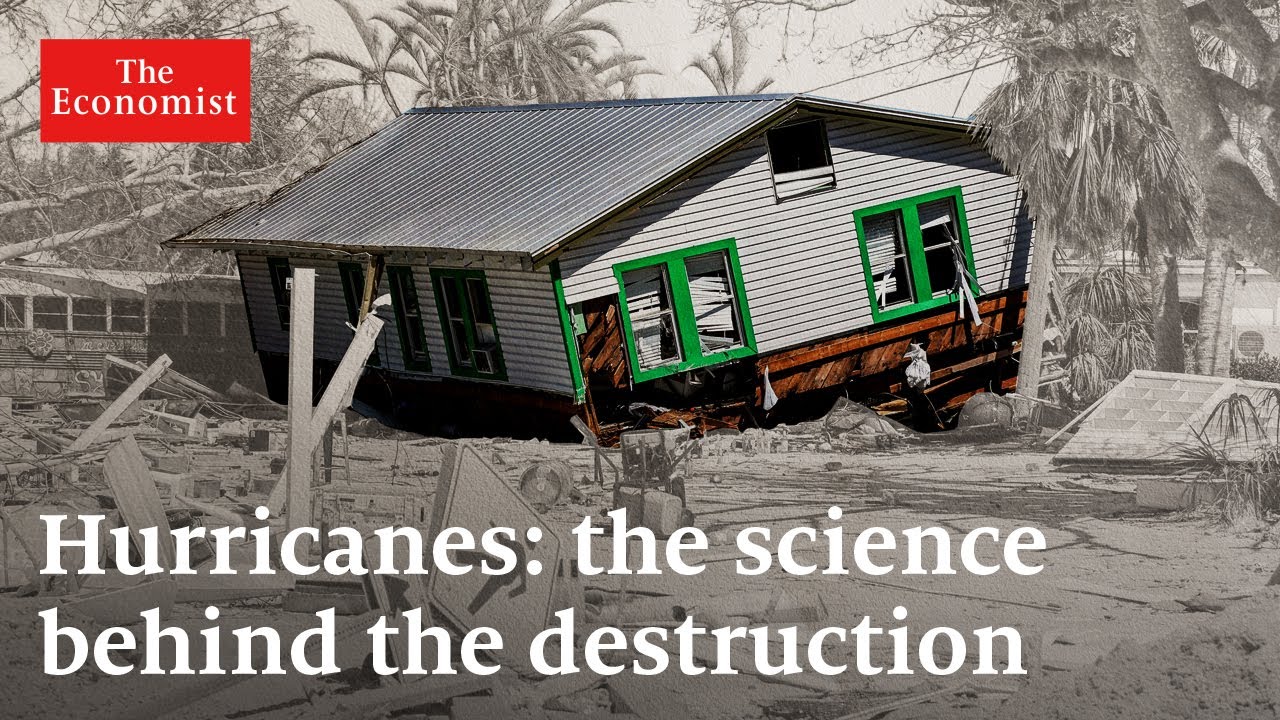What Causes Hurricanes?
Unleash Your Creative Genius with MuseMind: Your AI-Powered Content Creation Copilot. Try now! 🚀
Introduction
Hurricanes, typhoons, and cyclones - these massive rotating thunderstorms are some of the most destructive natural phenomena on Earth. With winds reaching speeds of over 200 miles per hour, these self-sustaining heat engines can cause devastating consequences when they make landfall. From extreme rainfall to storm surges, hurricanes have the incredible ability to focus the sun's energy into one destructive package. But what is it that turns a peaceful patch of ocean into Nature's Most Powerful storm?
The Origins and Names of Hurricanes
Tropical cyclones, as hurricanes are scientifically known, have different names depending on their origin. They are called typhoons in the Northwest Pacific, cyclones in the Indian Ocean and South Pacific, and hurricanes in the North Atlantic and Northeast Pacific. But where did the term "hurricane" come from? The word hurricane originated from the language of the Taino, a Caribbean indigenous people. It then found its way into Spanish, and eventually into English. Early colonists described hurricanes as a terrifying emblem of hell and the end of all things. Alexander Hamilton, who grew up in the Caribbean, wrote of the astonishing noise that accompanies a hurricane, something that would strike astonishment into angels.
Throughout history, hurricanes have wreaked havoc on coastal communities in their path. From storm warnings along the Florida coast to the devastating disasters of the past, people are always in haste to prepare for these powerful storms. Scientists now define a hurricane as a rapidly rotating storm system that originates over tropical waters and has a closed low-level circulation. But how do hurricanes actually form?
The Formation of Hurricanes
Hurricanes often begin as tropical waves, which are low-pressure areas that move across the Atlantic from Africa. However, a number of specific conditions need to align in order to turn a tropical wave into a hurricane. The sea surface temperatures must be at least 26.5 degrees Celsius down to a depth of 50 meters. Converging winds near the ocean's surface force air to rise, forming storm clouds. Additionally, low wind shear, which is a change in direction and speed of winds at different heights, is necessary to prevent the hurricane from being torn apart. High relative humidity from the surface to the mid-levels of the atmosphere is also crucial. Lastly, the storm must be more than five degrees of latitude from the equator, about 200 miles, to fully develop.
A hurricane acts as a parasitic feedback loop, extracting heat from the ocean and turning it into destructive wind energy. It lives off the ocean's heat, using it to create wind that further absorbs heat from the ocean. This process creates a rotating motion known as the Coriolis effect, which gives hurricanes their characteristic twisted form when viewed from space. Once the wind speed reaches 74 miles per hour, the tropical storm is officially classified as a hurricane.
The Destructive Power of Hurricanes
Aside from wind speed, hurricanes possess other weapons in their arsenal. The heat energy pumped into a hurricane is equivalent to the average rate at which the United States uses electrical power, making hurricanes incredible heat engines. Furthermore, hurricanes can release up to 2 billion tons of rainfall every day, with water causing 90 percent of deaths during hurricanes, particularly from storm surges. When a hurricane makes landfall, its powerful winds push the ocean forward, creating a wall of water known as a storm surge. This can cause immense damage, as seen during Hurricane Katrina, which broke New Orleans' water defenses and resulted in a wall of water standing eight meters tall.
When a hurricane moves across land, it can no longer draw energy from the ocean, eventually dissipating. However, the devastation left behind can take years to rebuild, with tropical cyclones in the United States costing an average of $22.4 billion per storm. This is significantly more than other extreme weather events like droughts, which cost an average of $11.1 billion per season.
Climate Change and Hurricanes
While there is no scientific consensus on how climate change affects the behavior of hurricanes, it is clear that it is influencing the systems that fuel these storms. Warmer oceans mean hurricanes have more room to grow and become more powerful. Over 90 percent of the extra heat produced by global warming is absorbed by the oceans, providing hurricanes with more destructive abilities. In a warmer world, extreme rainstorm events are also expected to become even more extreme due to the warmer air's ability to hold more moisture. Hurricane Harvey, which hit Texas in 2017, was considered one of the worst rainstorm events in the United States' history, and there is evidence suggesting that global warming increases the likelihood of such events.
Sea-level rise, another consequence of climate change, also plays a role in the intensity of storm surge damage caused by hurricanes. Higher sea levels mean more water can be pushed further inland, exacerbating the destructive power of storm surges. Additionally, studies indicate that hurricanes are traveling at slower speeds, resulting in longer periods of strong winds and increased damage.
Conclusion
While the intensity of hurricanes may not decrease in the near future, understanding how they are affected by climate change and preparing for their landfall are crucial in adapting to a warming world. Humans must find ways to protect themselves against hurricanes, as no amount of efforts to reduce global warming will actively diminish their intensity. Hurricanes are a part of the Earth's system, and as such, adaptation and preparation are essential for safeguarding coastal communities and minimizing the devastation caused by these powerful storms.
